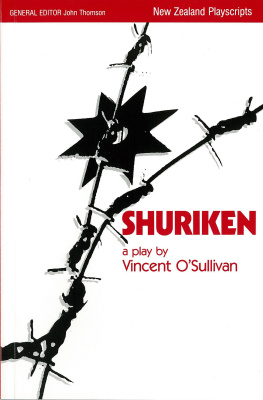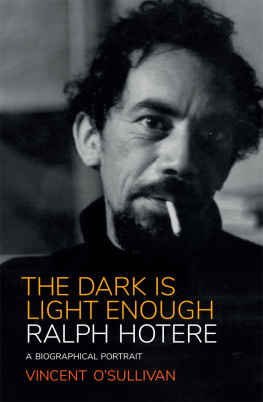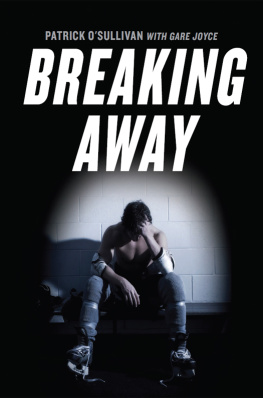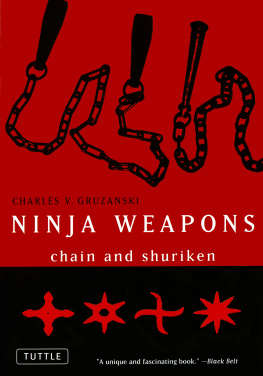Vincent OSullivan - Shuriken
Here you can read online Vincent OSullivan - Shuriken full text of the book (entire story) in english for free. Download pdf and epub, get meaning, cover and reviews about this ebook. year: 2012, publisher: Victoria University Press, genre: Detective and thriller. Description of the work, (preface) as well as reviews are available. Best literature library LitArk.com created for fans of good reading and offers a wide selection of genres:
Romance novel
Science fiction
Adventure
Detective
Science
History
Home and family
Prose
Art
Politics
Computer
Non-fiction
Religion
Business
Children
Humor
Choose a favorite category and find really read worthwhile books. Enjoy immersion in the world of imagination, feel the emotions of the characters or learn something new for yourself, make an fascinating discovery.
- Book:Shuriken
- Author:
- Publisher:Victoria University Press
- Genre:
- Year:2012
- Rating:5 / 5
- Favourites:Add to favourites
- Your mark:
- 100
- 1
- 2
- 3
- 4
- 5
Shuriken: summary, description and annotation
We offer to read an annotation, description, summary or preface (depends on what the author of the book "Shuriken" wrote himself). If you haven't found the necessary information about the book — write in the comments, we will try to find it.
Shuriken — read online for free the complete book (whole text) full work
Below is the text of the book, divided by pages. System saving the place of the last page read, allows you to conveniently read the book "Shuriken" online for free, without having to search again every time where you left off. Put a bookmark, and you can go to the page where you finished reading at any time.
Font size:
Interval:
Bookmark:
VINCENT OSULLIVAN
Shuriken was first performed at Downstage, Wellington, on 29 July 1983, with the following cast:
| C AMP C OMMANDANT | Lewis Martin |
| A DJUTANT | Mark Hadlow |
| J ACKO | Desmond Kelly |
| T INY | Colin McColl |
| P OM | Roy Billing |
| E RNIE | Chris Mills |
| T AI | Pou Temara |
| A DACHI | Akira Kikuchi |
| C HARLIE | Timothy Bartlett |
| P RISONERS | Leo Donnelly |
| Vinij Khureya | |
| Soo How Koh | |
| Rick Loos | |
| Cliff Wood |
Directed by Phillip Mann
Designed by Anne Coombes
State Manager, Keith Tait
Lighting by Stephen Blackburn
Like most New Zealanders, I knew there had been some kind of incident in Featherston during the Second World War, and that Japanese prisoners were shot by their guards. But also like most New Zealanders, I knew about it in only the haziest way. I presumed, I suppose, that the prisoners must have been escaping, and that the event was unavoidable. Only a couple of years ago, while preparing an article for the Listener, did I find out more about it.
For many years, the findings of the military commission that investigated what occurred at 11 a.m. on 25 February 1943, had been unavailable to the public. The inquiry was a limited one understandable for a country at war but it left in the air questions that might interest a civilian. And a little reading made one thing very clear. Featherston was certainly not a mutiny. Nor was it an attempted outbreak, nor a massacre, nor in any sense an execution. Yet whatever name one chooses to put on it, in less than a minute there were thirty-one Japanese dead, and ninety-one wounded. Nineteen others died over the next few days. There was also one dead New Zealander, and seven injured.
Almost forty years after the event, I was able to meet several of the New Zealand guards, one of the camps interpreters, and two of the chaplains. One of the guards allowed me to read his own account of life in the camp, and another lent me copies of statements made by the Japanese when they returned home.
It is difficult to think of two peoples less prepared for each other personally than New Zealanders and Japanese in the 1940s. There had never before been a prison-of-war camp for Japanese soldiers, any more than the imperial military code offered instructions for how prisoners should behave. We had no experience as guards; they had no philosophy to help them cope under arrest. Two groups of men were forced into the closest association, with neither really knowing what to expect of the other. There are few stories where there is such a dramatic meeting between East and West. There is no other New Zealand story anything like it. At first I thought it would make an interesting piece of fiction. In fact, it was already drama.
Shuriken, then, is a war play without goodies or baddies. There was nothing that could make the average Japanese soldier at ease in a New Zealand POW camp, and there was no way the average Kiwi soldier could grasp how his charges thought. I wanted to write a play, then, about quite ordinary men, thrown into a setting where there could only be confusion. I tried not to distort what I knew happened in the camp. I was also quite openly writing not history, but a play.
To suggest the hierarchical structure of the prison camp I have set the action of the play on two levels. The Camp Commandant and the Adjutant usually are seen on the upper level. The prisoners and other ranks of the New Zealanders share the normal stage area. It is important that the prisoners are on stage at all times, even if only as shadowy or peripheral presences, during the scenes between the New Zealanders.
Music is essential to the atmosphere of the play. In the Downstage production, Japanese music was played during all scene changes except those in which specifically named Western tunes were used. To the production, and to myself, it was extremely important that the Ngati Porou so kindly allowed us to use Haere ra e hika, a traditional waiata, at the end of Act I and the beginning of Act II. It may not be possible in other productions to repeat the authenticity of this lament, but always a Maori song must be used at those points to convey that third dimension in the play, and that other culture which was perhaps as far removed from pakeha New Zealanders as it was from the Japanese.
NewZealanders
C AMP C OMMANDANT . Mid fifties.
A DJUTANT. Thirties.
J ACKO . Early forties.
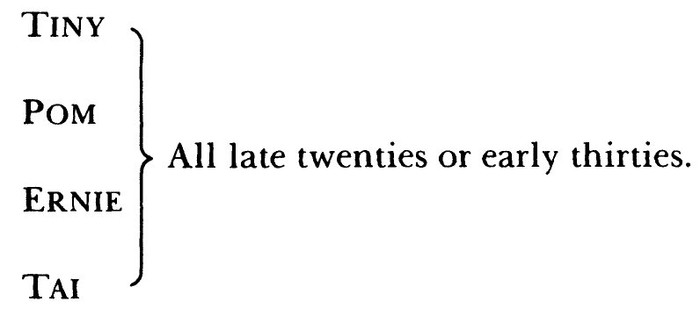
Japanese
A DACHI . Mid twenties.
C HARLIE . Late thirties.
S IX P RISONERS . All in their twenties, or younger.
The play is set in the POW camp at Featherston, Wairarapa, in the summer of 194243. The final scene takes place on the morning of 25 February 1943.
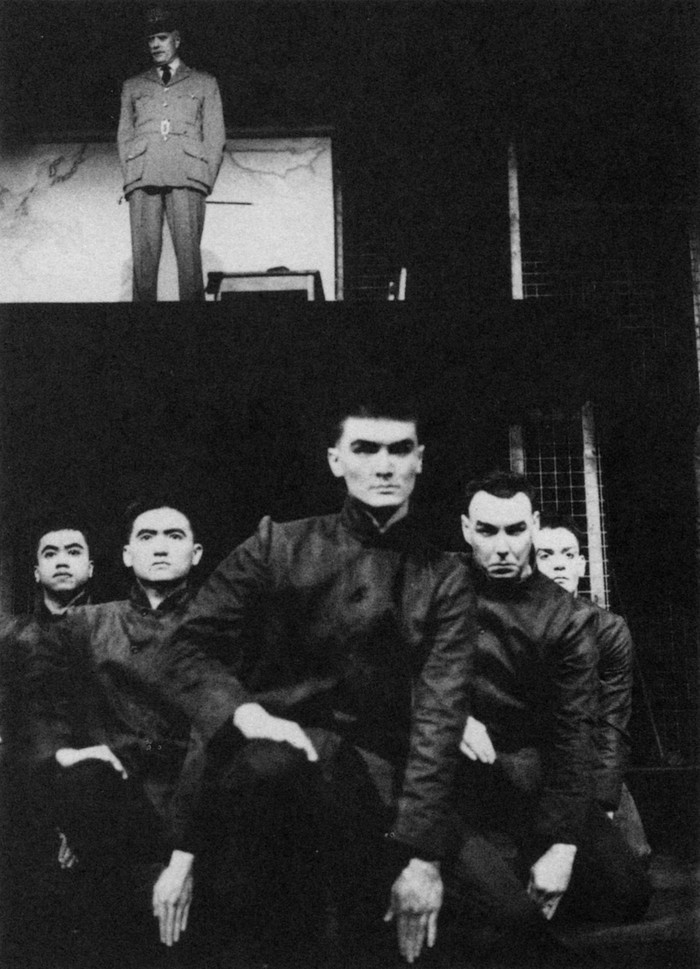
Lewis Martin as the Camp Commandant and (from left), Vinij Khureya, Soo How Koh, Leo Donnelly, Cliff Wood and Rick Loos as Japanese prisoners. (All photos are of Downstage 1983 production, photographer Robert Cross.)
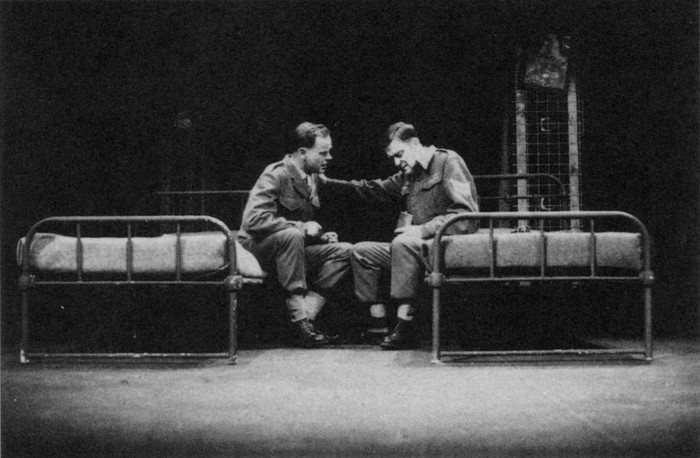
Jacko (Desmond Kelly) comforts Ernie (Chris Mills) with a drink, p. 36
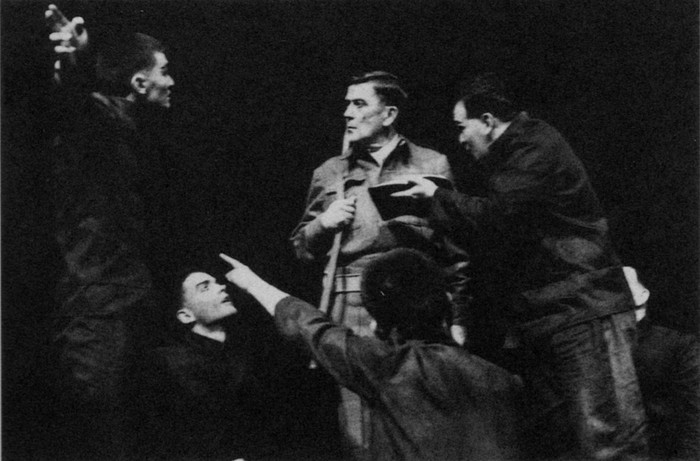
The prisoners question Jacko (Desmond Kelly) about Christ, p.42. The prisoners (from left) are Leo Donnelly, Rick Loos, Vinij Khureya and Timothy Bartlett.
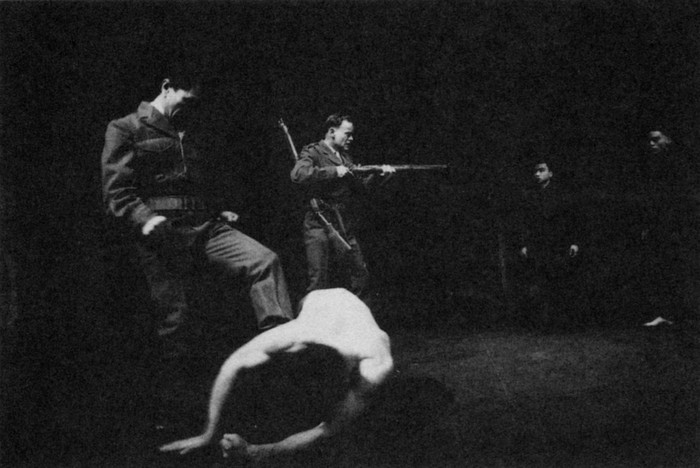
Tai (Pou Temara) and Ernie (Chris Mills) break up the wrestling match, p. 61. The wrestler is Leo Donnelly. Standing to the right are Vinij Khureya and Rick Loos.
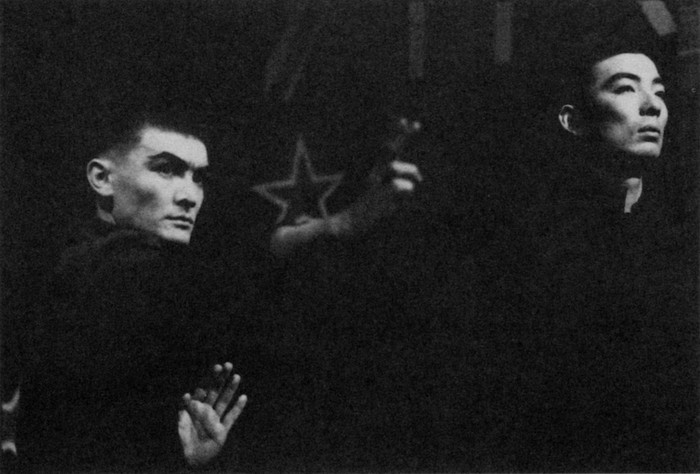
Leo Donnelly and Akira Kikuchi as Japanese prisoners, p. 17.
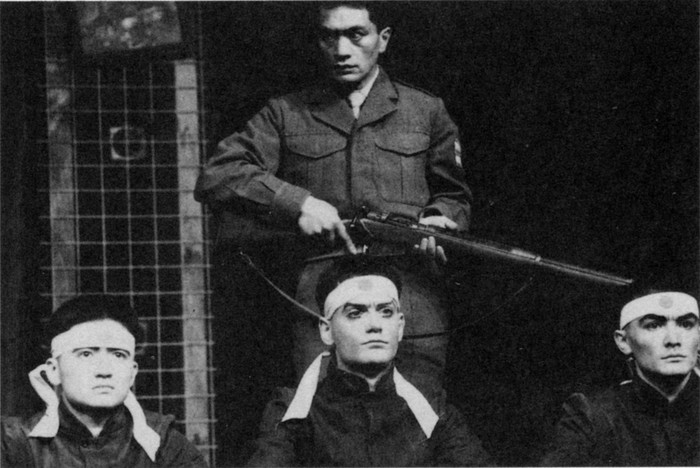
Tai (Pou Temara) reporting the Commandants order to proceed as usual, p. 81. Prisoners (from left) are Soo How Koh, Rick Loos and Leo Donnelly.
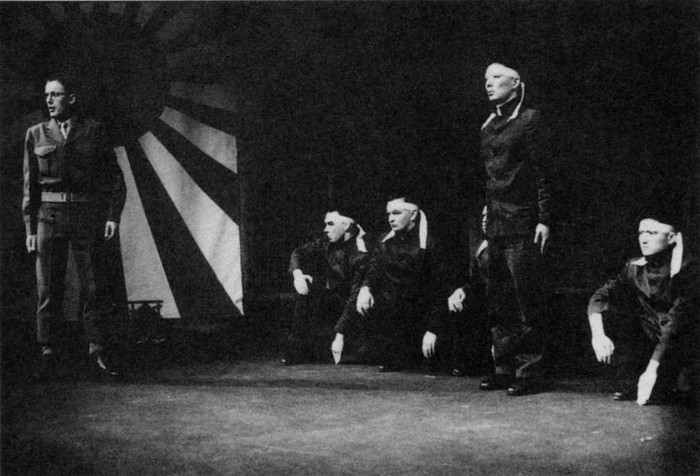
Tiny (Colin McColl) acting as interpreter, p. 83. The prisoners, are (from left) Cliff Wood, Timothy Bartlett, Vinij Khureya (obscured), Akira Kikuchi and Soo How Koh.
The play begins with a clip from wartime films. It shows various scenes of the Emperor and of Japanese aggression. The commentary is timed to precise images, concluding with a freeze-frame close-up of a Japanese pilots face.
Font size:
Interval:
Bookmark:
Similar books «Shuriken»
Look at similar books to Shuriken. We have selected literature similar in name and meaning in the hope of providing readers with more options to find new, interesting, not yet read works.
Discussion, reviews of the book Shuriken and just readers' own opinions. Leave your comments, write what you think about the work, its meaning or the main characters. Specify what exactly you liked and what you didn't like, and why you think so.

